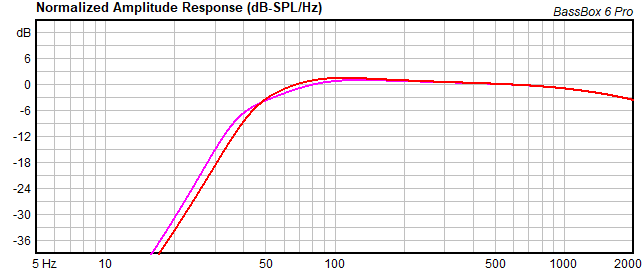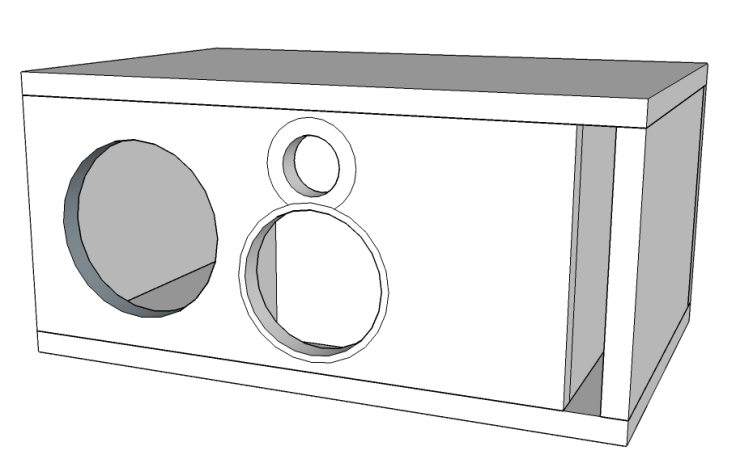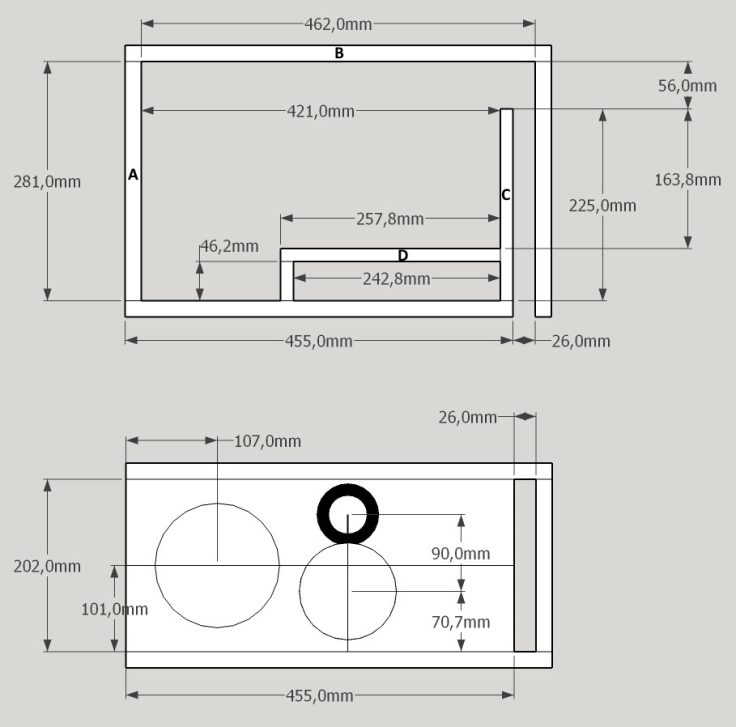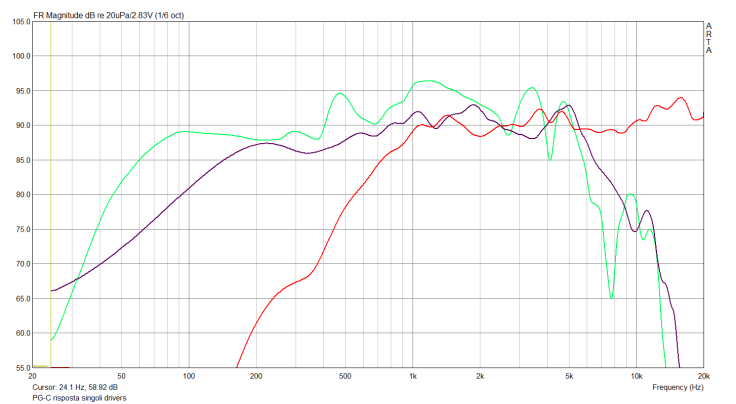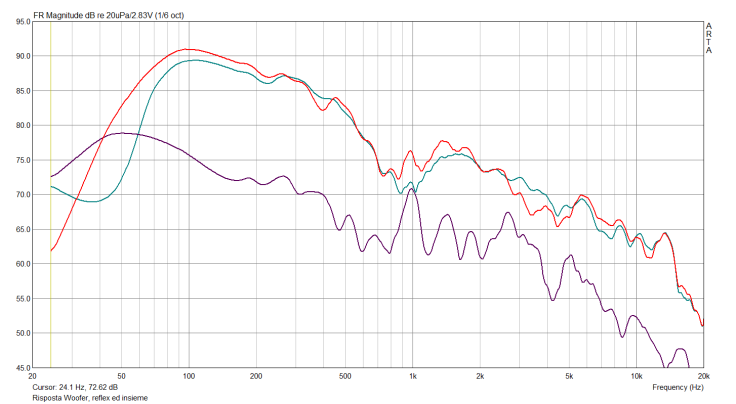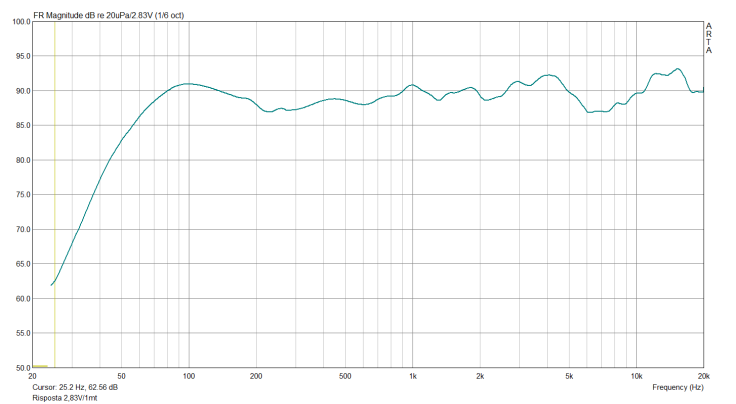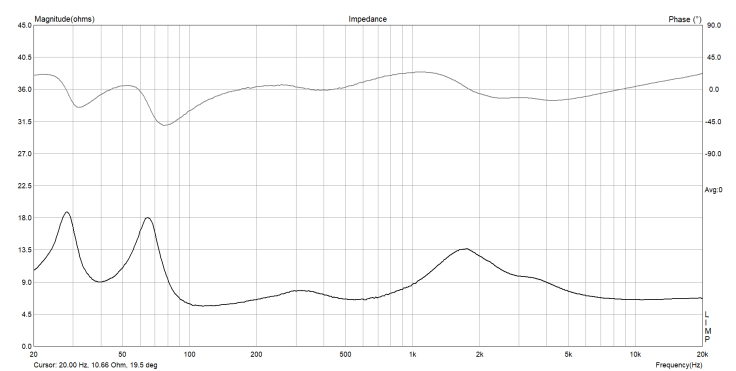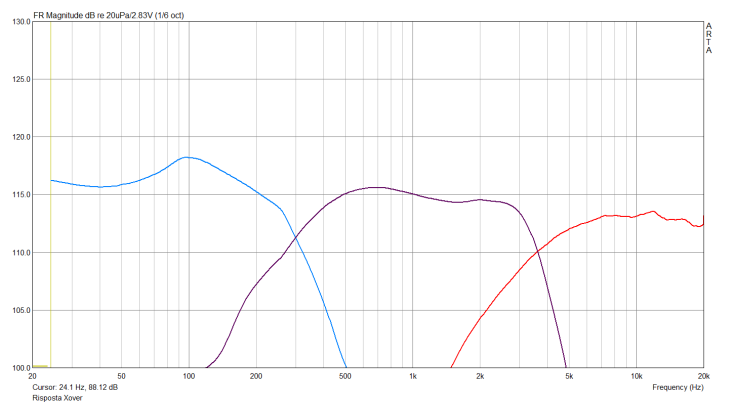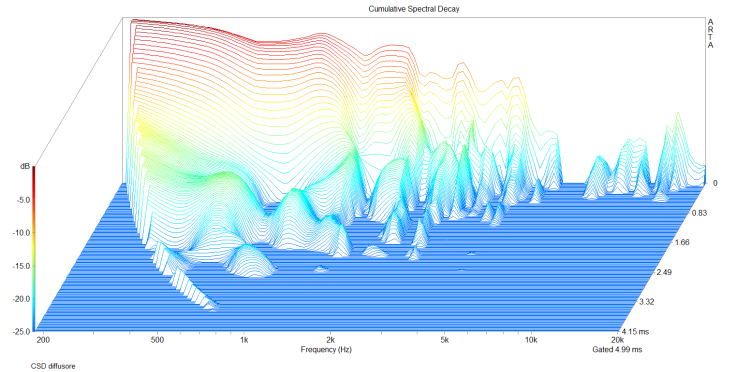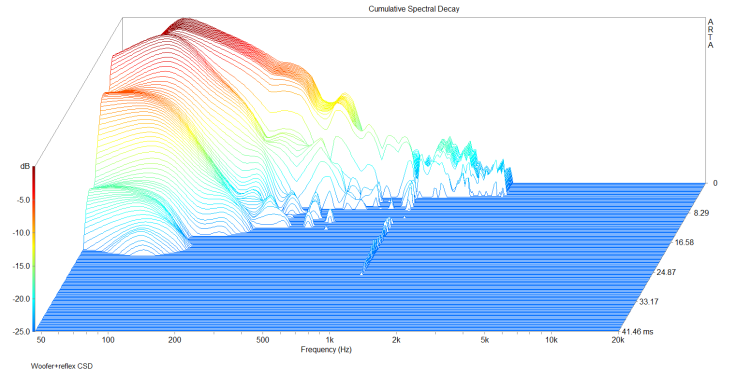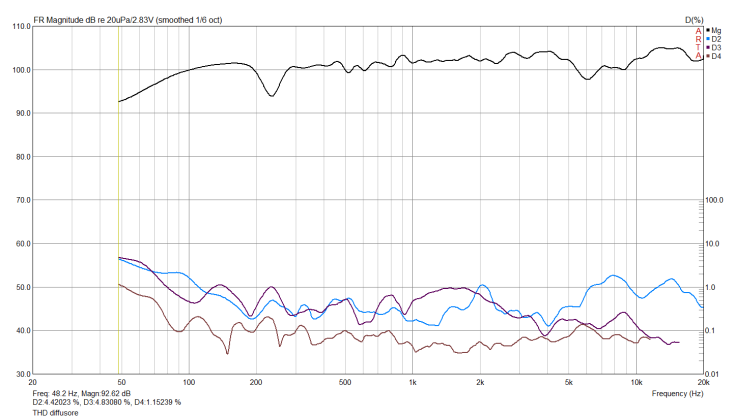The challenge was to build a 3-way floorstanding loudspeaker, not too big and with an excellent WAF, well sounding, with an adequate frequency drop, for a 360 ° music / home theater listening, a discrete sensitivity and easy driving for a use also with minimal amplifications and above all at a price accessible to all …. have I succeeded? The answer to you after a short reading!
For the realization i chose drivers from me already tested several times with an excellent quality / price ratio:
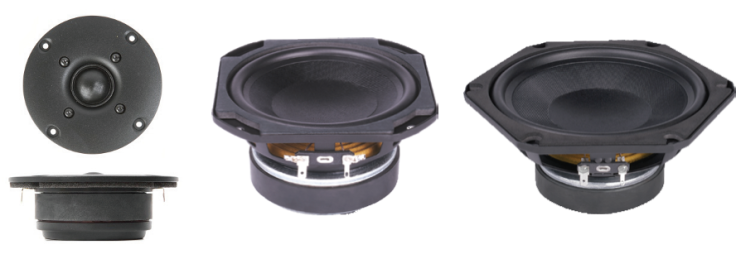
Tweeter: Sb Acoustics SB26STC-C000-4
Midwoofer: Faital Pro 5FE120
Woofer: Faital Pro 6FE100
Starting from these drivers I made a floorstanding loudspeaker externally measuring 100x22x28cm (HxLxP) made with a 19mm mdf , with internal reinforcements and internally structured in 2 separate volumes, one with a 2.7-liter capacity closed box for the midwoofer and another about 37 liters for the woofer with the rectangular section reflex port made directly from the cabinet and placed at the front for an easy insertion of the speaker in the environment and placed at the bottom of the floor just above the woofer in order to use both the reinforcement provided from the floor for the low frequencies.
As far as the tune frequency for the woofer, it is about 34Hz, lower than the classic in order to obtain a less steep frequency drop and more similar to a pneumatic suspension load and also to limit the excursion of the woofer at lower frequencies where it will emit only the port as illustrated below where in celestial the porting used and in violet the classic one:
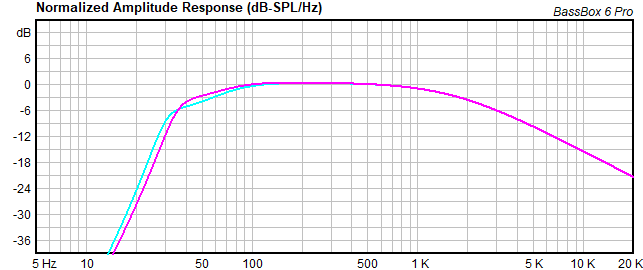
This is the final shape of the box:
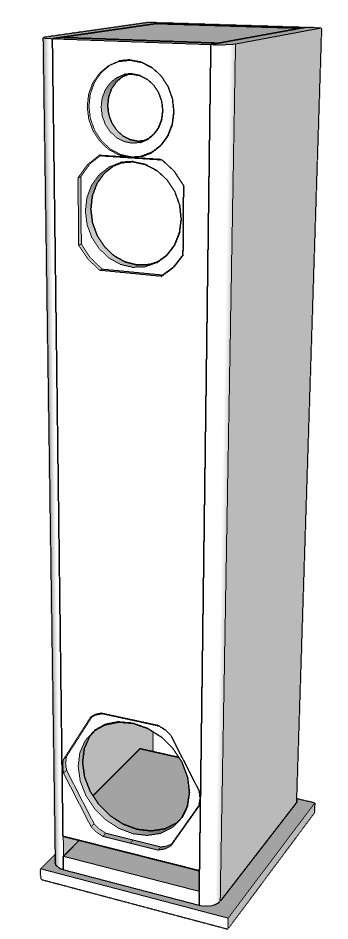
CONSTRUCTION PLANS
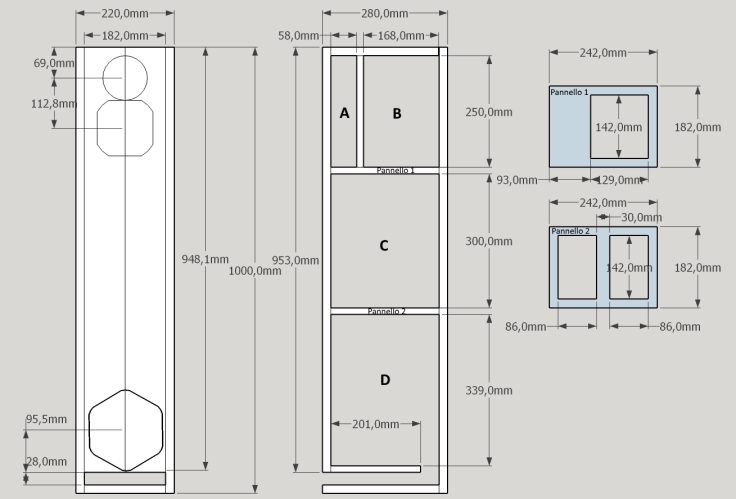
-
all the panels are in mdf 19mm except the internal ones which are in 15mm mdf.
-
in the closed volume A of the midwoofer insert, filling it, glass wool.
-
fill the subvolume B 40 sound absorbent with 40mm polyester fiber
-
in the subvolume C insert on all the side walls, rear and front sound-absorbing ashlar-type.
-
place in the subvolume D ashlar type absorbing only on the inner septum of the reflex port and on the rear wall behind the woofer, arriving halfway through the driver to avoid obstructing the air in the port.
-
place the crossover filter on a side wall of subvolume D where the connection terminals will be inserted immediately below the soundproofing in the rear wall.
-
it is recommended to lock the cables inside the reinforcement partitions of the piece of furniture with clamps. .
-
drilling a hole on the back wall of the volume A for the passage of the connecting cables coming from the crossover filter of the tweeter and the midwoofer, being sure to seal it well around the cables with silicone sealant to prevent the passage of air from the volume A to the subvolume B.
-
place all the drivers with the flanges flush with the front wall (baffle), as an option you can avoid doing it only for the woofer.
Response 2,83V/1mt each drivers
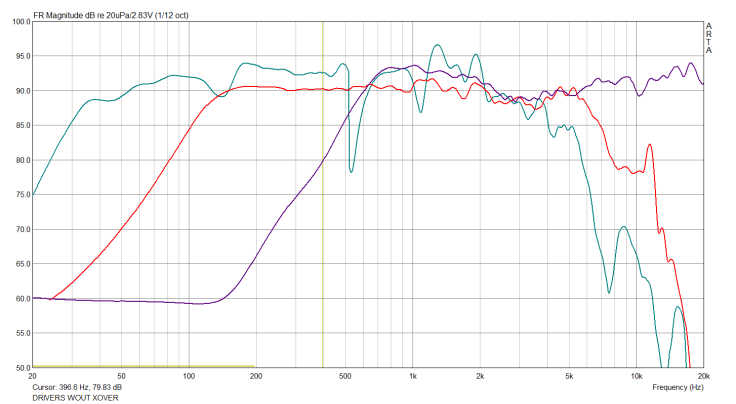
Response of the individual drivers without filters, the response of the woofer (light blue) and the midwoofer (red) is the result of the merge between the farfield measurement and the nearfield measurement (for the woofer is also included near the reflex port which is very close the woofer also inserts a hole around 520Hz that does not worry us because the woofer will be cut lower.
Response 2,83V/1mt
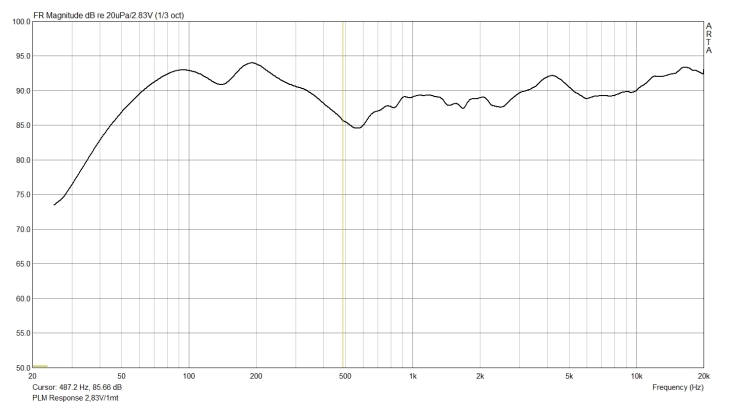
Impedance curve
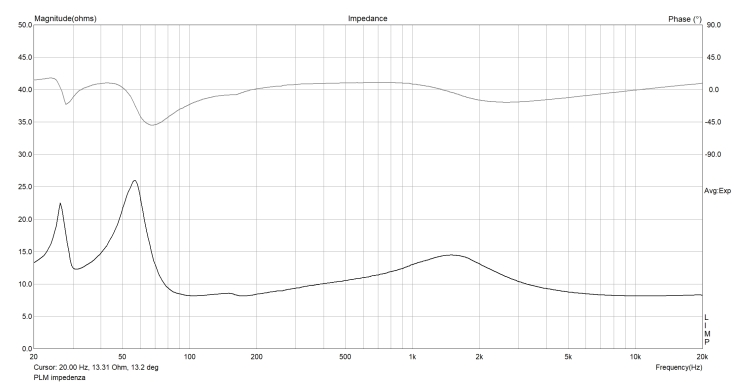
Crossover filter – schema and components
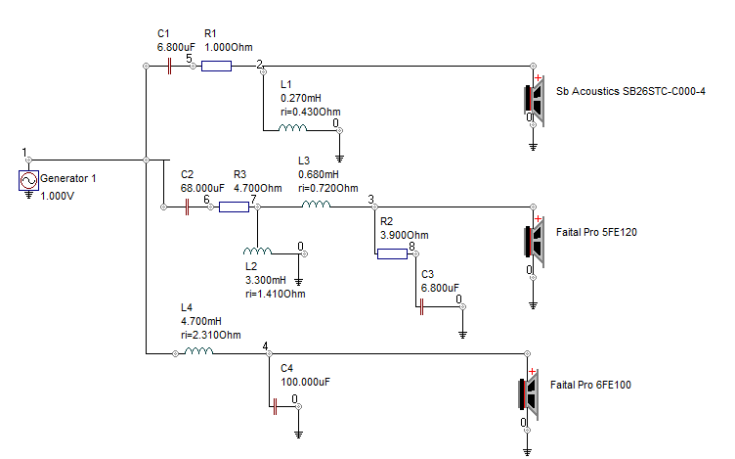
Crossover filter – electrical response to the speaker terminals
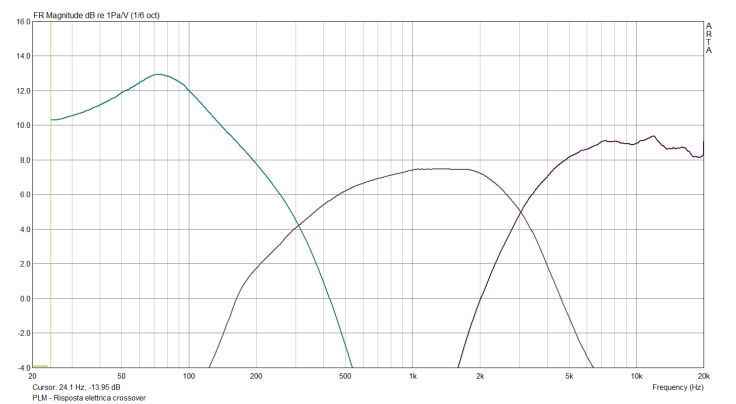
Midwoofer decay 2,83V (nearfield 2mm)
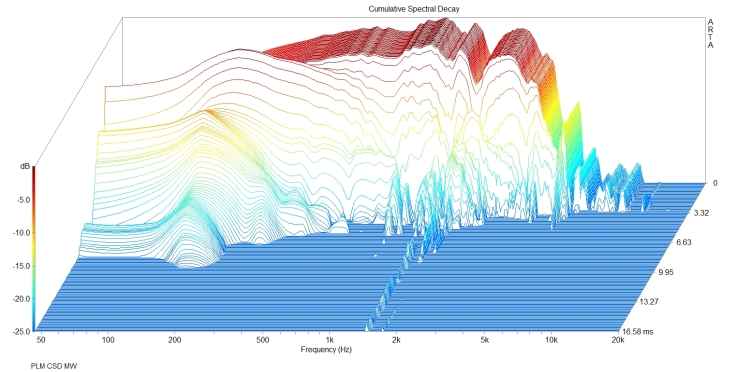
Woofer and reflex decay 2,83V (nearfield 2mm)
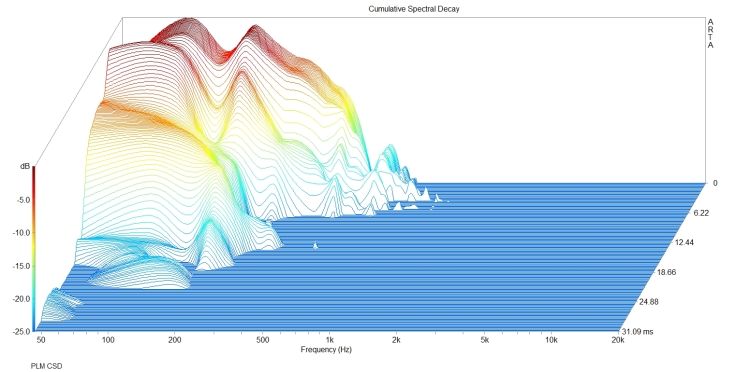
Loudspeaker THD (35cm)
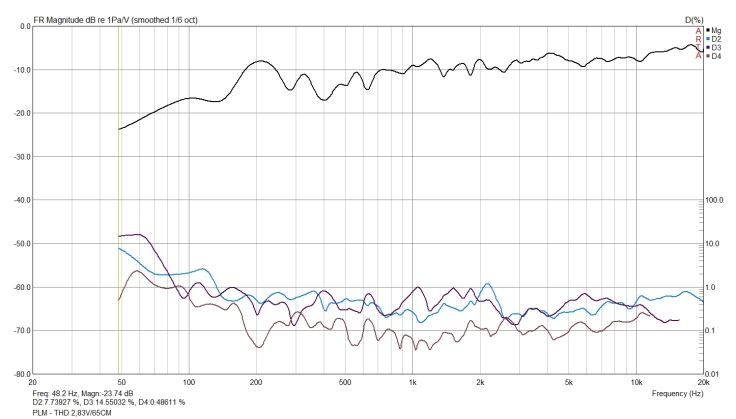
Response in the environment from the listening point (2,5mt)
Technical features
- Type: floor-standing slim tower speaker
- Way: 3 way
- Load type
- Midwoofer closed box
- Woofer bass reflex
- Tweeter 2.54cm(1″) soft silk dome
- Midwoofer 13cm (5”) cone rubber suspension
- Woofer 16cm (6”) cone rubber suspension
- Crossing frequencies 380 Hz / 2800 Hz
- Sensibility 91,5db @ 2,83V/1mt
- Nominal impedance 8 ohm
- Minimum power 15 watts RMS per canale.
- Frequency response 50Hz – 18 Khz (-/+ 3db)
- Recommended listening distance >= 2mt
- External dimension 100x22x28 (AxLxP)
- Box 19mm mdf panels, internal treatment with sound-absorbing.



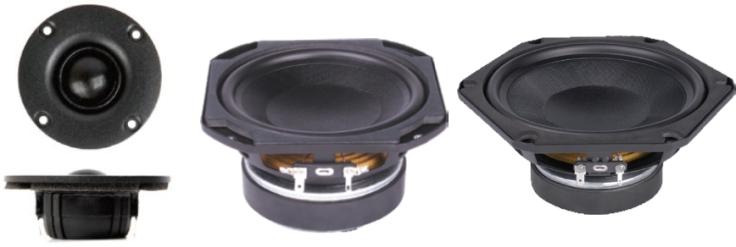 Tweeter: Sb Acoustics SB26STCN-C000-4
Tweeter: Sb Acoustics SB26STCN-C000-4 